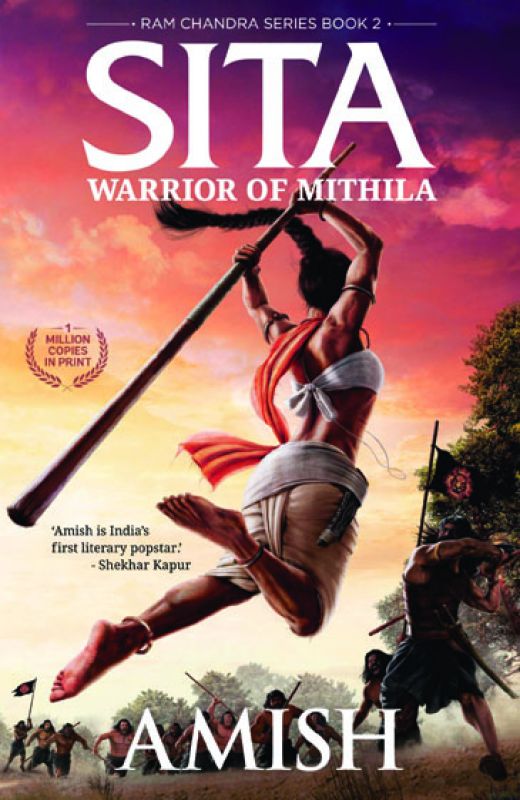Women of substance
Author Amish Tripathi's latest offering narrates the story of Hindu goddess Sita, but with a fresh, layered perspective.

Author Amish Tripathi, who became a sensation with his very first book on the Hindu God of destruction — Shiva, recently announced the release of the second one from the Ram Chandra series.
Titled Sita — Warrior of Mithila, the book is a sequel and yet, not exactly a sequel of the first book in the series, Scion of Ikshvaku. While Amish usually takes a year and a half to release his books, this one has taken nearly two years. “I’ve tried a very different narrative style this time, called multi-linear narrative. So, in the first book, people read about the story of Lord Ram, from his birth to the kidnapping of Lady Sita. The second starts from the birth of Lady Sita and will go on till she is kidnapped. The third will be from the birth of Ravan to the kidnapping of Lady Sita. From the fourth book onwards, it will be a single narrative. Writing the second book was very complex and that is why it took more time than usual,” he shares.
 Sita — Warrior of Mithila by Amish Tripathi Westland pp.376, Rs 350
Sita — Warrior of Mithila by Amish Tripathi Westland pp.376, Rs 350
Amish always tries to give an unusual twist to the mythological tales. In his first book of the Ram Chandra series too, he opens with Dashrath not liking Ram, which is contrary to the popular belief. “There are many versions of the Ramayana. The version that most urban Indians think is true is based on the 1980’s serial that was largely an adaptation of Ramcharitmanas, written by poet Goswami Tulsidas. Every poet has deciphered the original Ramayana written by sage Valmiki, in different ways. For example, in popular belief, when in Panchvati, Lakshman leaves Sita alone, before he goes to help Ram, he draws a Lakshmanrekha, asking Sita not to cross it. However, there is no mention of Lakshmanrekha in Valmiki’s Ramayana.” he says.
Expressing his thoughts on Lord Ram, Amish says, “I see Lord Ram as a rebel. He wanted to establish dharma in a society that had no rule and was lawless. He rebelled against the then norms of the society and a rebel has to suffer for the good of others.”
Be it Sati or Sita, Amish has always defined his female characters as strong and independent. Talking about the status of women in India currently, he says, “Whenever a country suffers a lot of violence, it tends to become patriarchal. The status of women in India fell during the medieval era, when India was targeted by many invaders. However, for the last 70 years, we have been a peaceful society and it’s high time we revive our ancient ways, where women were respected. Our ancient scriptures too mention that, the Gods abandon the land where women aren’t respected.”
The 42-year-old author has not only read as many books as he could, but has also travelled and met many people while researching about the various versions of Ramayana. “ I have read around 10 to 15 versions of the Ramayana. As per our dharmic ways, we are largely an oral civilisation. Many of our mythological stories are passed on from generation to generation, through word of mouth. And hence to know about the various versions, I had to travel. I genuinely believe that my stories are a blessing from Lord Shiva and my task is to get as much knowledge as I can. How the story shapes up, is up to Lord Shiva,” Amish concludes.

